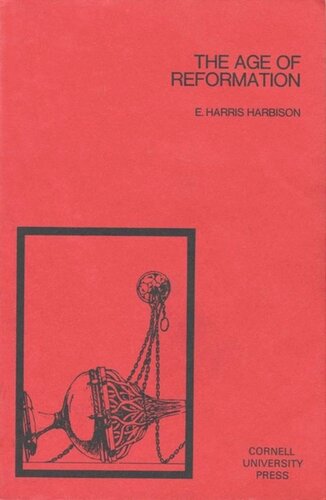

Most ebook files are in PDF format, so you can easily read them using various software such as Foxit Reader or directly on the Google Chrome browser.
Some ebook files are released by publishers in other formats such as .awz, .mobi, .epub, .fb2, etc. You may need to install specific software to read these formats on mobile/PC, such as Calibre.
Please read the tutorial at this link: https://ebookbell.com/faq
We offer FREE conversion to the popular formats you request; however, this may take some time. Therefore, right after payment, please email us, and we will try to provide the service as quickly as possible.
For some exceptional file formats or broken links (if any), please refrain from opening any disputes. Instead, email us first, and we will try to assist within a maximum of 6 hours.
EbookBell Team

0.0
0 reviewsIn The Age of Reformation, first published in 1955, E. Harris Harbison shows why sixteenth-century Europe was ripe for a catharsis. New political and social factors were at work—the growth of the middle classes, the monetary inflation resulting from an influx of gold from the New World, the invention of printing, the trend toward centralization of political power. Against these developments, Harbison places the church—nearly bankrupt because of the expense of defending the papal states, supporting an elaborate administrative organization and luxurious court, and financing the crusades. The Reformation, as he shows, was the result of "a long, slow shifting of social conditions and human values to which the church was not responding readily enough. The sheer inertia of an enormous and complex organization, the drag of powerful vested interests, the helplessness of individuals with intelligent schemes of reform—this is what strikes the historian in studying the church of the later Middle Ages."Martin Luther, a devout and forceful monk, sought only to cleanse the church of its abuses and return to the spiritual guidance of the Scriptures. But, as it turned out, western Christendom split into two camps—a division as stirring, as fearful, as portentous to the sixteenth-century world as any in Europe's history. Offering an engaging and accessible introductory history of the Reformation, Harbison focuses on the age's key individuals, institutions, and ideas while at the same time addressing the slower, less obvious tides of social and political change. A classic synthesis of earlier generations of historical scholarship on the Reformation told with clarity and drama, this book concisely traces the outlines, interlocked and interwoven as they were, of the various phases that comprised the "Age of Reformation."